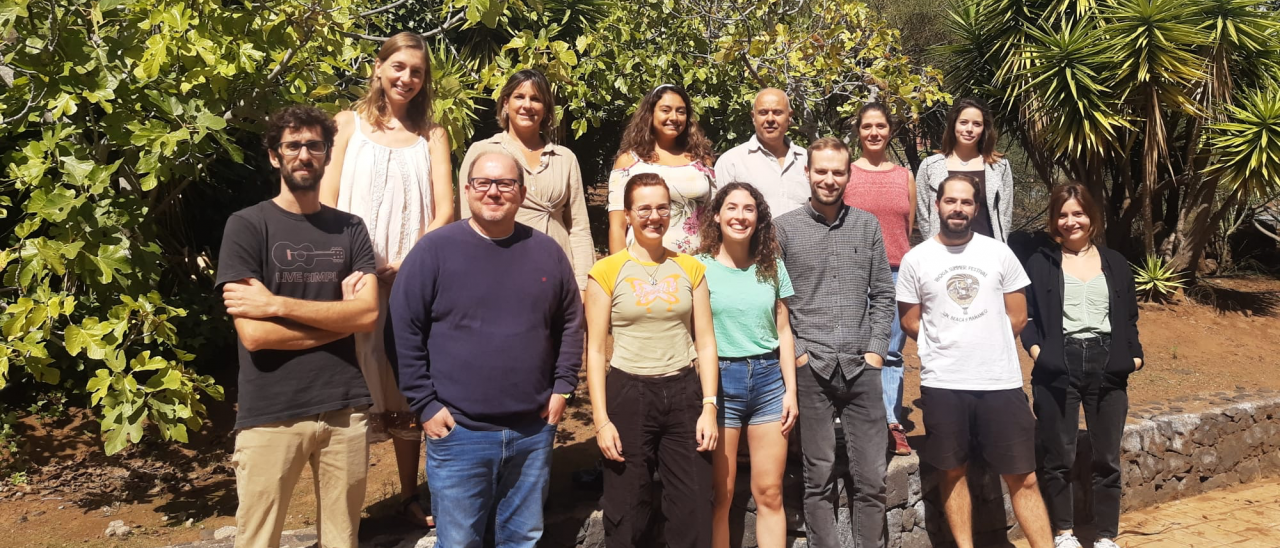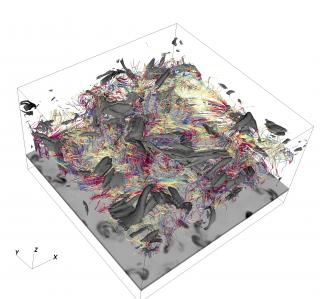Related grants:
General
Welcome to the Traces of Galaxy Formation research group website.
We are a large, diverse, and very active research group aiming to provide a comprehensive picture for the formation of galaxies in the Universe. Rooted in detailed stellar population analysis, we are constantly exploring and developing new tools and ideas to understand how galaxies came to be what we now observe.
A complex star formation history, as the one expected to describe galaxy evolution, needs a multidisciplinary approach to be fully understood. Our group at the IAC consists of experienced researchers in cosmological simulations, dynamical studies, stellar populations and morphological properties of galaxies up to high redshift. We combine different approaches (e.g. observations and theory, secular and cosmological evolution studies) to obtain a complete view of the dominant mechanisms driving the evolution of galaxies.
Within this general framework, we are currently exploring three main areas of research:
- Stellar population synthesis models
- Development of new stellar population synthesis models
- Stellar population analysis tools
- Universality of the stellar initial mass function (IMF)
- Cosmic evolution of galaxies
- Massive galaxy evolution
- Stellar populations in different environments
- Low surface brightness science
- Machine learning and cosmological simulations
- Evolutionary processes in nearby galaxies
- The role of black holes in the evolution of galaxies
- Surveys of nearby galaxies
- Stellar kinematics and dynamical models
If you want to get in contact or work with us, please send an email to the head of the group (Ignacio Martín-Navarro ignacio.martin [at] iac.es (ignacio[dot]martin[at]iac[dot]es)).
Members
Results
Here you can find some of our most recent highlights:
- Local variations of the stellar velocity ellipsoid - II. The effect of the bar in the inner regions of Auriga galaxies. Walo et al. 2022, MNRAS (https://ui.adsabs.harvard.edu/abs/2022MNRAS.513.4587W)
- Anisotropic satellite galaxy quenching modulated by black hole activity. Martín-Navarro et al. 2021, Nature (https://ui.adsabs.harvard.edu/abs/2021Natur.594..187M)
- Evaluating hydrodynamical simulations with green valley galaxies. Angthopo et al. 2021, MNRAS (https://ui.adsabs.harvard.edu/abs/2021MNRAS.502.3685A)
- Sub one per cent mass fractions of young stars in red massive galaxies. Salvador-Rusiñol et al. 2020, Nature Astronomy (https://ui.adsabs.harvard.edu/abs/2020NatAs...4..252S)
- Detection of young stellar populations in apparently quenched low-mass galaxies using red spectral line indices. de Lorenzo-Cáceres et al. 2020, MNRAS (https://ui.adsabs.harvard.edu/abs/2020MNRAS.498.1002D)



